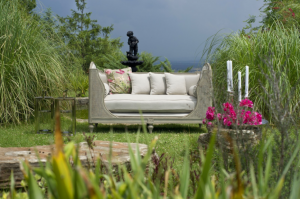
Southern California Curb Appeal
Image by Engin Akyurt from Pixabay
If you're gearing up to sell your home (or just bought one), you may be thinking about how to make your yard a better place. As a matter of fact, we are seeing [link to my last blog resellers market] that the Coronavirus has pushed some families to pull up their roots and look for properties with more space – inside and out. An investment in your yard could mean more peace of mind for you as you spend more time at home, or an increase in the sale price.
Winter is planting season, so now is a great time to start making your plans. If you are armed with a good strategy, you can have a stunning landscape for your southern California home.
Do We Ditch the Lawn?
With the naturally dry climate in Southern California, the constant threat of drought, and the long term issue of replenishing groundwater reserves, sustainable planting still makes sense, even for homeowners. With the need (sometimes requirement) to conserve water, a traditional lawn might not receive the kind of care and feeding that it should. However, there can be no one size fits all approach. You are the expert on your particular piece of land and can factor in the specific conditions that affect your property. If you have a small or very uneven yard, mowing alone can be a challenge. You can use native, drought-resistant plants, and still have a gorgeous yard. On the other hand, if you have a good-sized yard that is relatively flat (at least in some places), keeping a lawn may be a desirable option, as long as you use native grasses that thrive on little water.
Now, Let's Make a Plan
Creating the perfect yard doesn't happen by accident, nor does it happen overnight. Keep in mind that you will learn by some level of trial and error; some replanting and transplanting is likely. However, making a long term plan, with short term goals for each season, is a practical approach.
Start by drafting an optimal layout; a quick sketch will do. If you have enough space for a tree, make sure to plan it far enough away from the house so that the roots don't interfere with the foundation when fully grown. Plus we don't want the foliage to obscure the house.
Next, if you have space for shrubs (or other plants that are no more than about 3-4 feet at full height), consider planting those close to the house (or around trees/boulders). Plant shorter (less than 1 foot) plants in front of the shrubs and beside walkways or around trees. Adding a walkway (flat squares of cement or natural stone will do the trick) will help manage high traffic areas, and reduce the amount of lawn needed. Also, it is recommended to use mulch such as rocks and wood chips around the plants as a great method for conserving water by protecting the soil from wind and sun.
Select Your Plants
Native plants make the most sense. They support the natural ecosystem, use less water, are adapted to the region's soil conditions, and can even attract butterflies. Because they are low maintenance, you'll have prospective buyers floating in as well!
Choose plants that have varying heights and colors for visual interest. We have selected a few of our favorites below, but it is a good idea to glean from the experts at your local nursery on what to buy and how to plant it before you finalize your purchases.
Trees
If you have a large enough lot, trees can provide a good source of shade. Palm trees are classic, and the Brahea Armata has blue/green fan-like blades that give a regal appearance. There are several flowering trees, fruit trees, or native hardwood trees (such as oak) to choose from as well. Consider adding shrubs, grasses, or other shorter plants around the tree(s) to finish the look. Plant this first, since trees take time to grow into maturity.
Shrubs/Grasses
There are plenty of gorgeous plants that grow to low-medium height but require no watering once established. Deergrass grows to about 3 feet in height and width. Native perennial penstemons have lovely blue, red/orange, and pink flowers, and like gravelly soil. Fragrant English Lavender, Cleveland Sage, and Mexican Bush Sage have blue and purple flowers and attractive greyish-green foliage. Rosemary and some other herbs thrive on lots of sun and little water.
Short/Ground Cover Plants
The Common Yarrow is a spreading plant that can be mowed (lawn alternative anyone?), with clumps of white flowers. Beach Suncups have showy lemon yellow flowers with silver foliage and are native to sand dunes. The Canyon Live-Forever is a succulent that grows well in containers or rock gardens; it has red-orange flowers in spring. Showy Stonecrop is a cactus with dainty pink flowers and smooth foliage.
Containers and Climbers
To complete the look, consider adding climbing plants at a wall or trellis (such as the extravagant and care-free bougainvillea) or a large container for an inviting accent. Note that containers don't allow the plant to establish deep roots, so more watering may be needed.
A great yard takes some planning and patience but is well worth the effort. If you are looking for more advice on how to increase the value of your home, or are getting ready to sell, don't hesitate to reach out to the team at Bydand. At Bydand, it is our mission to provide steadfast solutions tailored to accomplish our clients' home financing goals. We like to think we're all in this thing together.

